INTRODUCTION
If you’ve followed my writing on this forum, you know it’s no secret that I adored the HiFiMan Edition X V2 (HexV2). It was my go-to headphone for most of the Fall of 2020 and early 2021. Then, I heard the HiFiMan Arya. While I didn’t love the Ayra’s signature, its spatial abilities and detail retrieval were another step up from the HexV2 and got me longing for a headphone that could combine the warmth and smoothness of the HexV2 with the staging, imaging, detail, and texturing of the Arya. Well, from what I was told that was the HE1000V2 (HekV2). When a deal for a used model came along, I sold my favorite son (lol) HexV2 and made the jump the HekV2. Was it worth it? Read on to find out…
TL;DR
The HE1000V2 is an accomplishment. Its sound is BIG, but also can be intimate. The sound is detailed, but also smooth and relaxed. The signature is warm but also airy and sparkly. The timbre is wonderful. It’s comfortable. It looks good. It has become the first headphone I reach for. Is it perfect? No. It’s not the last word in detail retrieval in its tier, the treble can be a bit hot with poor recordings, and it can be a little amp picky. Some will object to a slight dip in the 1KHz range of its frequency response. The stock cables also are an embarrassment to cable-kind…and it’s not cheap to find replacements. Nonetheless, the HekV2 lists for $2999 from most retailers, it’s worth it. But, it also can be found new in the $2200-2300 range, and can go used for as low as $1300. At those prices, it’s a no-brainer if you’re looking for a headphone in this performance tier.
KNOW YOUR REVIEWER
My preferred genres are rock/metal and classical/orchestral music. I’m getting to know jazz more and enjoying quite a bit. I also listen to some EDM and hip-hop. My hearing quirks include a high sensitivity to midrange frequencies from just under 1KHz to around 3Khz, give or take. My ears are thus quick to perceive “shoutiness” in headphones in particular. I describe “shoutiness” as an emphasis on the ‘ou’ sound of ‘shout.’ It’s a forwardness in the neighborhood of 1KHz and/or on the first one or two harmonics above it (when I make the sound ‘ooooowwwww’ into a spectrum analyzer the dominant frequency on the vowel sound is around 930Hz, which also means harmonic spikes occur again at around 1860Hz and 2790Hz). In the extreme, it can have the tonal effect of sounding like a vocalist is speaking or singing through a toilet paper tube or cupping their hands over their mouth. It can also give instruments like piano, but especially brass instruments, an added ‘honk’ to their sound. I also get distracted by sibilance, or sharp ‘s’ and ‘t’ sounds that can make ssssingers sssssound like they’re forssssssing esssss ssssssounds aggresssssssively. Sibilance does not physically hurt my ears nearly as quickly as shout, though. It’s distracting because it’s annoying and unnatural. Finally, in a new clause in this section, I’m discovering that I have a preference for more subtle detail. I like good detail retrieval and hearing what a recording has to offer, but I prefer that presentation to what many would consider relaxed and subtle rather than aggressive of detail-forward. To my ear, more subtle detail-retrieval sounds more realistic and natural than aggressive, detail-forwardness. There is a balance here, though, because detail retrieval can get too relaxed and that can sound unnatural, as well. Readers should keep these hearing quirks and preferences in mind as they read my descriptions of sound.
FEATURES & BUILD
The Patriarch of its Line
The HE1000 was launched by HiFiMan in 2015. It’s a little unclear when the V2 was launched. The HE1000se was launched in 2018, so I’m guessing the V2 was somewhere in between 2015 and 2018. Regardless, the HE1000 is a critical model in HiFiMan’s line of headphones with egg-shaped ear cups. The HE1000 technology served as the base tech for my beloved Edition X V2, Arya, Ananda, HE1000se, and the current planar-magnetic flagship Susvara. I won’t go into a lot of detail about the magnet structure and all of the features of the HE1000 that make it special. But, if you’re interested, you can read about it on HiFiMan’s website.
The HekV2 is a large, open-back planar-magnetic heaphone. It has a rated impedance of 35Ω and sensitivity of 90dB/mW. That makes it fairly power hungry. It drives more like Arya than HexV2. It’s not going to be a mobile solution.
Aesthetics & Comfort
The HekV2, being a part of HiFiMan’s egg-shaped line, is large and comfortable. The earcups have room for very large ears. The suspension-strap headband system is very comfortable and the metal tension bend has enough clamp to keep the headphone firmly on the head but not become uncomfortable. The headstrap is leather, and becomes a bit floppy with age and use:
The aesthetic is really nice. I know beauty is in the eye of the beholder, but in IMO these are nice looking cans. The metal chassis has a matte silver finish and there is a nice wood veneer around the outside of the earcups. Yes, it is just a veneer on top of the metal chassis:
The ear pads are big and comfortable with a slight forward angle. The part of the pad that makes contact with the head is a soft polyester. Most of the time it’s comfortable, but sometimes the hair of my sideburns gets caught in the threading and pulls…first world problems.
As Open Back as They Come
Yeah, these egg-shaped HiFiMan cans – all of them – are completely open back. To say the ‘leak’ sound isn’t accurate because they make absolutely no attempt to hold sound in. They are not good cubicle cans or walking around cans. Everyone else will hear your music and you’ll hear the world around you just as much (unless the music is rockin’ enough).
Cables Matter
Most HE1000 models floating around out there use dual 2.5mm cable entry. The cable jacks on the cups are mounted flush so that pretty much any 2.5mm terminations will fit. Recently produced models of HekV2 (and HE1000se?) have moved to 3.5mm jacks on the cups. That’s probably a good move seeing as how 3.5mm are a bit more durable and a bit more common. My unit has 2.5mm connections.
HiFiMan takes a lot of heat for the ridiculous ergonomics of their stock cables. I’m not going to be any different. From an ergonomic perspective, they suck. I think they use medical tubing around the conductors. They look and feel like catheter tubes. The plastic outer tubing is stiff, noisy, and keeps the cable from ever lying the way you want it to. The conductive wires inside it aren’t braided together either. They’re just run parallel to each other through the tubing. This pic is not the greatest, but it shows two conductive wires next to each other inside the tubing:
Now that wouldn’t be such a big deal if those individual wires – which I think are also covered in plastic tubing themselves – didn’t slide past and rub on each other. When they start rubbing on and sliding past one another it just feels squicky. It’s a hard feeling to convey unless you’ve experienced it, but it’s just nasty.
That returns us to the fact that it’s good news that the cable entry system uses flush mounted 2.5mm or 3.5mm jacks. You can buy whatever kind of aftermarket cable you want and it will fit. But, it’s gonna cost you. As ergonomically terrible as the stock cables are, whatever conductive material the wiring itself is made of is top-notch stuff; they sound great. When I first got my HekV2, I used the Hart Audio Cables that I had been using with me HexV2 – same cabling system. Hart cables are ergonomic gold with their modular system. But with HekV2, I kept having issues with the sonic center image being slightly to one side or the other and also drifting slightly side-to-side as a singer changed pitch. It was weird, unsettling, and I was worried I’d gotten burned by buying used. The seller I got my set from bundled a Plussound Poetic GPH cable as part of the deal. I switched to that cable and WOW. The center image locked and stabilized. The soundstage opened up even more with better separation to go with it. And the sound smoothed out in general; cymbal crashes sounded more natural and less harsh, vocals sounded more natural, and a host of other things. If you read my Abyss Diana Phi review, you read I had to use HiFiMan stock cables on the Diana because I was having the same sonic issue with Hart cables on that one took, and the Plussound cable didn’t fit the Diana’s recessed jacks. The stock HiFiMan cables solved the issue there and would on the HekV2 if they weren’t so gross to use that I only touch them when I absolutely have to. This cabling situation is one of the biggest cons of the HekV2. The stock cables are terrible but of high sonic quality. HiFiMan sells replacement cables in the $350-500 range. The Plussound cable that came bundled with my set costs $500 new. If you’re looking to pick up an HE1000 model, you should plan on sinking multiple 100s of dollars into quality cables.
[for the skeptics, here is some recent measurement data showing how different speaker cables can affect sound. Headphone cables are basically speaker cables for smaller speakers…]
SOUND
Test Gear
I used the HekV2 with an assortment of amps and dacs. Amps included Cayin HA-1AMK2 tube amp, Monolith Liquid Platinum, Vioelectric HPA-V200 and HPA-V281, and HeadAmp GS-X Mini. DACs included Schiit Bifrost 2, Soekris dac1321, Holo Audio Spring 2 Level 2, and Chord Hugo 2 (as DAC only).
Signature
The HekV2 is both warm and bright – ie ‘v’ in signature. There is a subbass boost that sounds like its centered around 40 Hz that gently rolls back into the ‘flat’ range somewhere in the 120-140Hz range. The upper bass and midrange stays relatively constant through much of the vocal region. Then, there is another upward trend in frequency response somewhere in the 1.5-1.7KHz range up to some noticeably above-neutral energy in the treble.
The bass is extended and plentiful but also detailed, textured, and never bloated. Individual plucks of a electric bass guitar strings are resolved well. The HekV2 showed me Jason Newsted’s bass work on Metallica’s Enter Sandman was far more galloping and active than I had ever realized, for example. The HekV2’s bass is also well balanced between impact and weight. It doesn’t slam hard, but it slams enough to be fun most of the time, and then there’s lots of rumble and weight to go with the slam. Coincidently, I was writing this very point as the drum intro to Aerosmith’s Walk This Way was playing and Joey Kramer’s kick drum was punching pretty good and then the texture of Tom Hamilton’s bass guitar was resolved beautifully (Hugo 2 and V281 as the source chain in this instance). The most impressive aspect to me of the bass is that many headphones – even planar-magnetics – tend to roll off quickly below 50 or 60 Hz. The HekV2 remarkably goes UP in frequency response until somewhere around 40 Hz and doesn’t return to neutral until below the audible range. The HekV2’s bass presentation would likely be technically the overall best had I not heard the Diana Phi recently. More on this in the comparison section.
The midrange is detailed and has wonderful timbre. To my ear this headphone nails most instrument sounds and vocals the best I’ve heard to date. The ability to hold it together in the mids as music gets very busy is also remarkable. My midrange acid tests are The Poet and the Pendulum by Nightwish and the 1812 Overture by Erich Kunzel and the Cincinnati Pops Orchestra. Both recordings just flood the mid-range frequencies with information with huge numbers of vocals, instruments, and effects. The HekV2 sailed through these tests unlike any other headphone I’ve heard before, rendering each voice and instrument sound with seemingly no interference from the rest of the sounds. I think I’ve only heard these tracks separated better by one other headphone (Diana Phi) but the HekV2 maintained that wonderfully natural mid timbre in the process moreso. Some listeners may object to a perceived lack of presence in the treble, though. Since the subbass and treble are both elevated some the mids come across as less forward. HekV2 matches my hearing quite well because I can’t remember a single incidence of shoutiness or honkiness in the mids – and those are things I’m sensitive too. If mid-forward sound is your jam, this may not be the best way to spend your $3K.
The treble is bright, prominent, and sparkly. There is lots of detail and excellent timbre up top. Cymbals and their room reverb are resolved beautifully. However, the treble can be a bit too hot with some lesser quality recordings. This part of the frequency response is the most amp/dac sensitive, though. I recommend warmer, smoother electronics (amps especially). Amps that are aggressive, bright, or analytical can cause the HekV2’s treble to wander into sharp and shrill territory. When the HekV2 does go sharp and shrill, it’s less strident and piercing than when less expensive models do so, but it’s still not particularly enjoyable.
Detail Retrieval
The HekV2 is very resolving and detailed but takes a more subtle approach to detail retrieval than the other hi-end headphones I’ve listened to of late. This gives it an overall more relaxed and smooth presentation. However, it’s not at all lacking in detail. Room reverb, instrument key clicks, the sound of drumstick-to-metal that happens on the attack of a cymbal crash, are all presented naturally and effectively. The texture in the bass is such that it’s possible to hear the pluck of a bass guitar string and the string noise that happens on top of the bass tone. I know some listeners who prefer aggressive detail. If that’s you, this headphone probably isn’t your jam. But, if you’re like me and think that subtle detail sounds more lifelike, than this headphone might be for you.
Timbre
I really can’t complain here. We’re talking about a true high-end headphone hear and timbre – the ability for things to sound like what they really sound like; ie voices sound like voices, pianos sound like pianos, drums sound like drums, horns sound like horns, etc. – is outstanding. To my ear, things sound very right. I have heard the timbre bettered by Audeze LCD-24 for individual instruments. The LCD-24 has an amazing ability to squeeze seemingly every last drop of detail and timbre of an individual instrument played by itself. But, the HekV2’s already excellent timbre does not fall off as the 24’s does as more and more information is added to the music. When things get busy, the HekV2’s timbre is better and seems remarkably musical-complexity invariant.
Spatial Presentation
One thing I loved most about the HexV2 when I had it was how BIG it sounded. The soundstage was wide, tall, and deep. Everything sounded like I was sitting in the first row of a concert – just immense. Then along came the Arya, which said “hold my beer” and took it to another level. Both of those headphones also had pinpoint imaging and excellent separation and layering within that immense soundstage. Well, they got those abilities handed down to them from their big brother HekV2. The HekV2 can sound just as big and grand as either HexV2 or Arya, and it takes their already excellent imaging, separation, and layering to another level…maybe even 2 or 3 levels better. But HekV2 has another spatial trick up its sleeve. Where everything is grandiose through HexV2 or Arya, HekV2 can bring it in and sound more intimate when it needs to. It’s not going to be a Sennheiser HD600 series kind of intimate, but with a string quartet it has the ability to put the performers right in front of the listener and create an intimate, for-you-alone presentation. I found this Deutsche Grammophon record of Mozart’s string quintets to be intimate in presentation but still present the size of the performance hall surrounding the players.
The soundstage of the HekV2 is more out in front, not pulling off the wrap-around effect that some higher-end Audezes and Focals can. This is a matter of preference. By-in-large most music is performed in front of the listener so this approach sounds more natural to me. But, I can’t deny that being in the performance can be fun at times.
SINGAL CHAINS
I’ve dropped a couple hints here and there that HekV2 gets a little sensitive to amps in the treble. My Violectric amps did a much better job with HekV2 than the HeadAmp GS-X Mini. The Monolith Liquid Platinum also drove it pretty well too, but didn’t have the detail that the V281 could deliver (nor should it be expected to). My Cayin tube amp is transformer-coupled and can sound ok with the HekV2. The detail takes a slight hit and the soundstage flattens, maintaining the height and width but losing much of the depth. Plan on spending a good chunk if you want to use the HekV2 with a tube amp.
COMPARISON WITH OTHER HEADPHONES
The 2 headphones I’ve heard that make the most sense to compare to from a cost standpoint, Audeze LCD-24 and Abyss Diana Phi, I’ve already done at some length in those respective reviews. The points I wish to reiterate here involve the bass and midrange. The HekV2 has more bass quantity than LCD-24 and not as much as the Diana Phi is capable of (depending on pad position). The LCD-24 might slam slightly harder, and the Diana Phi definitely slams harder in the right pad position. For the mids, to my ear, it’s no competition. The HekV2 has the best overall midrange presentation of the three. The LCD-24 can wring more out of an individual instrument – the resinous sound of bows being dragged across strings, for example – until there are more than just a handful of instruments and voices happening at once. When that occurs, the LCD-24 loses its ability to resolve as well and timbre and separation suffers. The Diana Phi has more resolution than either 24 or HekV2 across the entire frequency spectrum but is so mid-forward that it gets shouty or cupped sounding often, whereupon the HekV2 pulls ahead of it in timbre. With the HekV2, it doesn’t seem to matter how much is going on in the signal, it stays calm and delivers.
What happens if you’re sitting with an Arya – a popular headphone right now – and are considering moving up? What do you gain? More bass quantity for sure, but overall more resolution and more natural timbre. Plus, you gain the ability to have a more intimate presentation when you want it, while still sounding huge when you want that too. The Arya might be right there with HekV2, maybe just a hair ahead, on dynamics and punch, but it’s noticeably behind on everything else.
FINAL THOUGHTS
The HekV2 is my headphone for the time being. I bought this one and I’m keeping it for awhile. The shallow v-signature suits my hearing and preferences well. The timbre, detail, and spatial presentation are all very impressive and enjoyable. The bass slam is arguably the only thing ‘lacking’ and that’s more in that it’s just not quite as impressive as the rest of the sonic package. The HekV2 is also quite physically comfortable and can be worn for long periods of time. The stock cables are horrendous. If you’re shopping for the HekV2 plan to sink some considerable money into high quality aftermarket cables, you’ll be glad you did.
That’s it. Thanks for reading all! Enjoy the music 

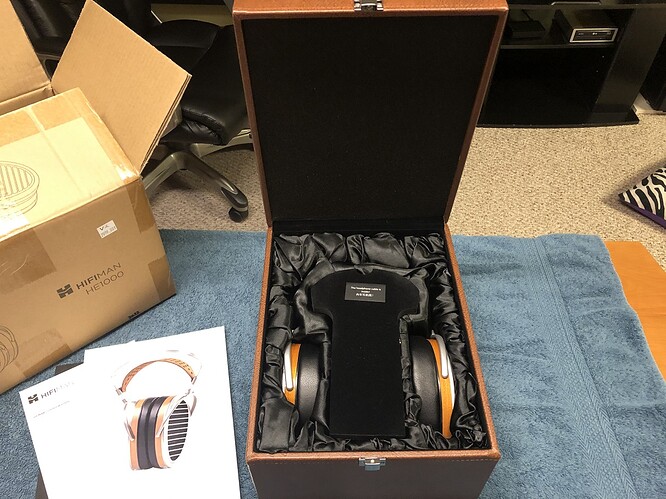
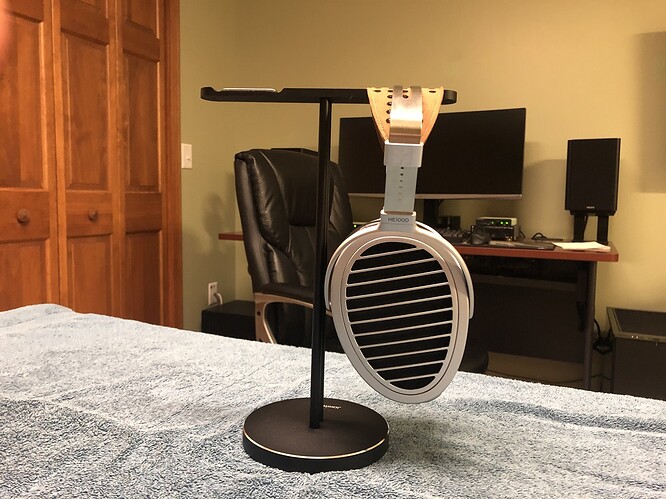
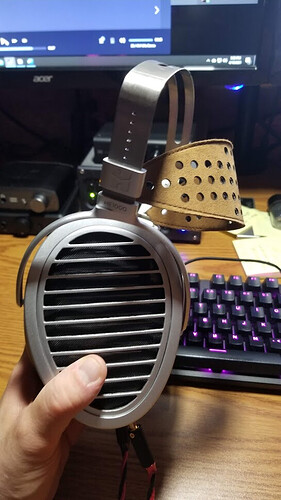
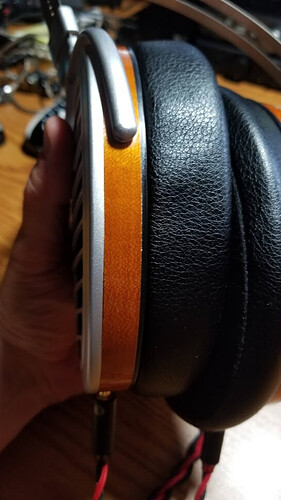
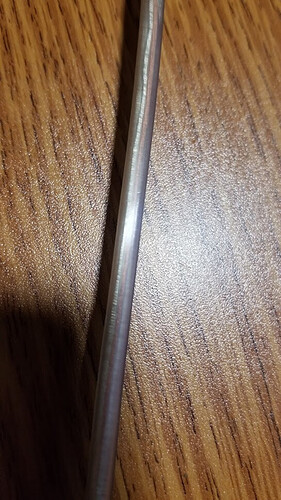




 The BX2+ has really interested me since its got quite a bit of power behind it for planars, although I’m not sure about anything higher end than that, need to look into it a bit more. Just thinking of possible options before I save up more for a v281 or something in that sort of performance range.
The BX2+ has really interested me since its got quite a bit of power behind it for planars, although I’m not sure about anything higher end than that, need to look into it a bit more. Just thinking of possible options before I save up more for a v281 or something in that sort of performance range.